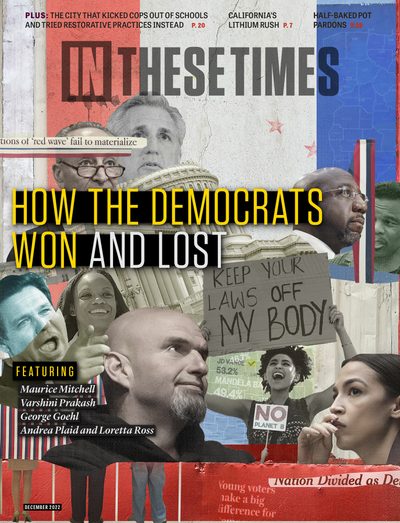When Cops Tell You Who They Are, Listen
A cartoonist illustrates police union leaders’ statements, in their own words.
Johnny Damm
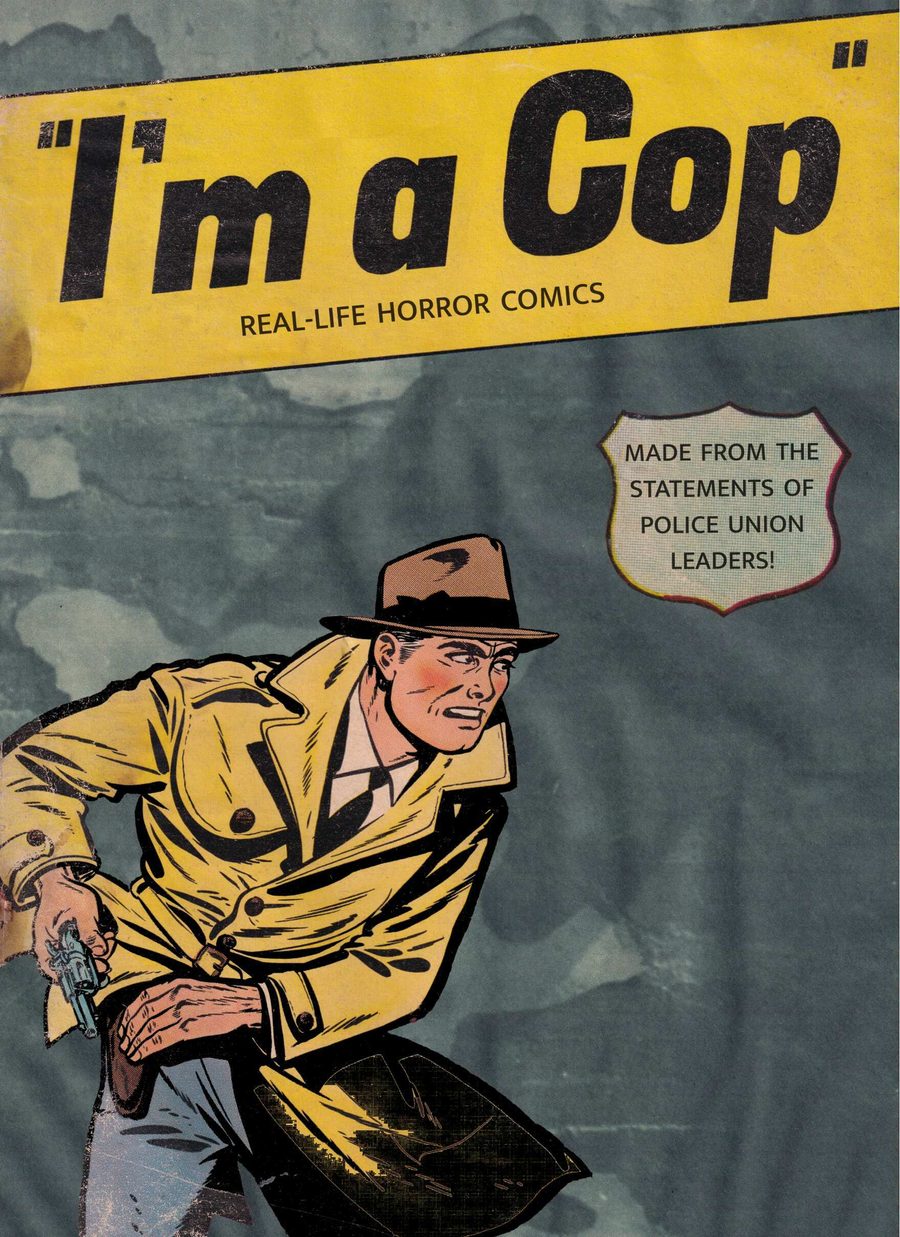
For more than two years, I read every public statement I could find from U.S. police union leaders, maintaining a large file of press releases, press conference transcripts, interviews, and posts on Twitter and Facebook. My goal was simple: identify a collective voice of U.S. policing. It struck me that police union leaders, the elected representatives of hundreds of thousands of U.S. police officers, might best represent that voice.
As an artist, I primarily make nonfiction comics that utilize real-world voices
quoted verbatim, voices I consider under-listened to. In the wake of the 2020 uprising following the police murder of George Floyd, I began to listen carefully to the police.
One key theme appeared again and again in police union statements, present in the unions’ carefully crafted talking points and in their off-the-cuff social media postings: They want us to be afraid.
Jamie McBride, former head of the Los Angeles Police Protective League, regularly characterizes Los Angeles as a city stuck in a crime wave, a city similar to a horror film setting. He told Fox News in late 2021 (and repeated in several other interviews) that Los Angeles “is like that [horror] movie [The] Purge. Instead of 24 hours to commit your crime, these bad people have 365 days to commit whatever they want.” He then told Fox viewers in a subsequent interview not to visit Los Angeles for the holidays because the police “can’t assure your safety.” In a later interview, he described one area of the city as “the set of The Walking Dead.”
McBride’s words explicitly adopt the horrific rhetoric central to the statements of other U.S. police union leaders. The Twitter account of the National Fraternal Order of Police has tweeted the same statement many times since 2020: “We are the #ThinBlueLine — the only thing standing between Order and Anarchy. We protect the prey from the predators, the good from the bad.”
That this statement originated in the months following the 2020 uprising is no coincidence. As Mariame Kaba and Andrea J. Ritchie characterize this moment in their book, No More Police: A Case for Abolition: “Facing one of the greatest crises of legitimacy in a generation, and on the heels of one of the largest uprisings against police violence in U.S. history, cops and pro-police forces reached for their most reliable weapon to consolidate power: fear.”
In his book The Horror of Police, Travis Linnemann explains the purpose behind the police tendency to characterize segments of the U.S. population as “monsters”: “For it to endure, the police power must have an enemy; it must create a monster to find and fight, kill or cage.” The police, in other words, need us to believe that monsters are real. But, as Linnemann stresses, “If monsters are, in fact, real … then we must count police among them.”
The police evocation of horror is precisely what led me to adopt the style of classic horror comics for “I’m a Cop,” which uses collaged elements from early 1950s horror comics to act as an uncomfortable counterpoint to the words of the police unions. If we are ever going to reject the false rhetoric of U.S. policing, perhaps we should begin by listening carefully to what police have been telling us all along.
The following panels are from “I’m a Cop.”
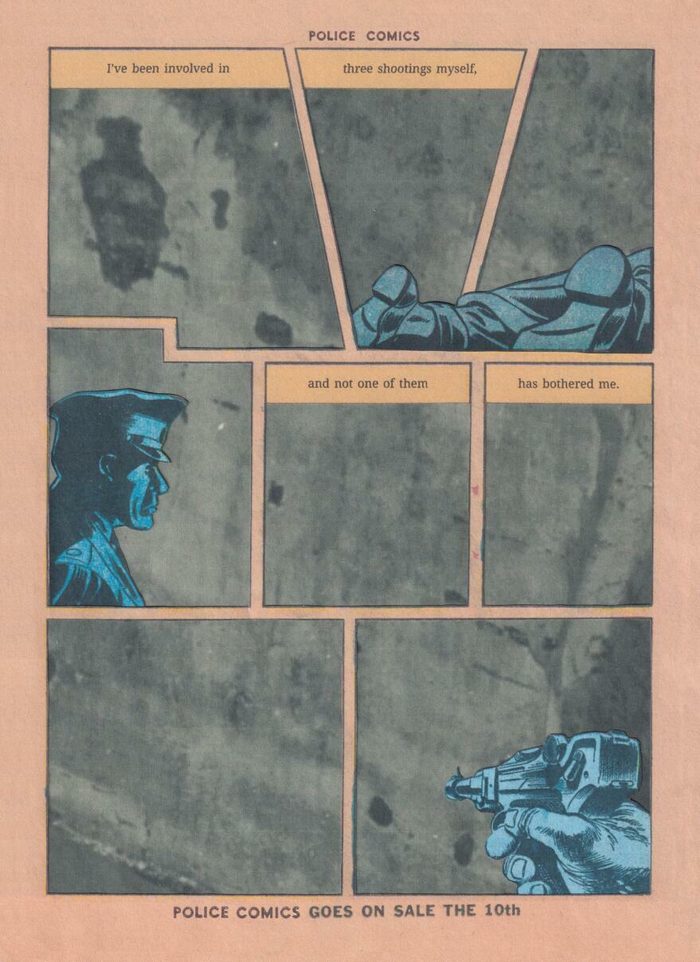
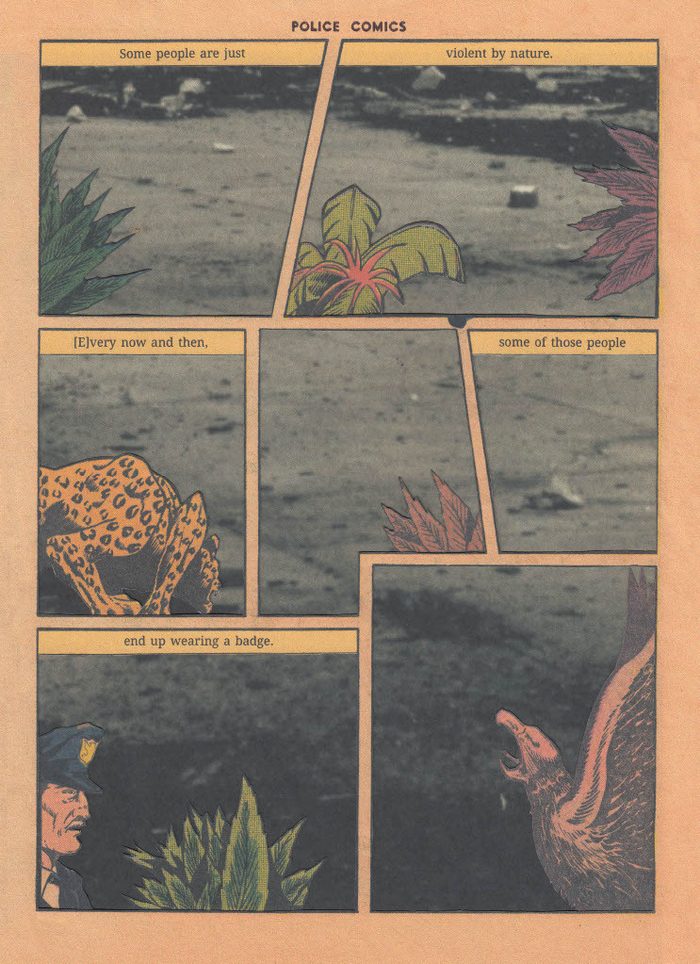

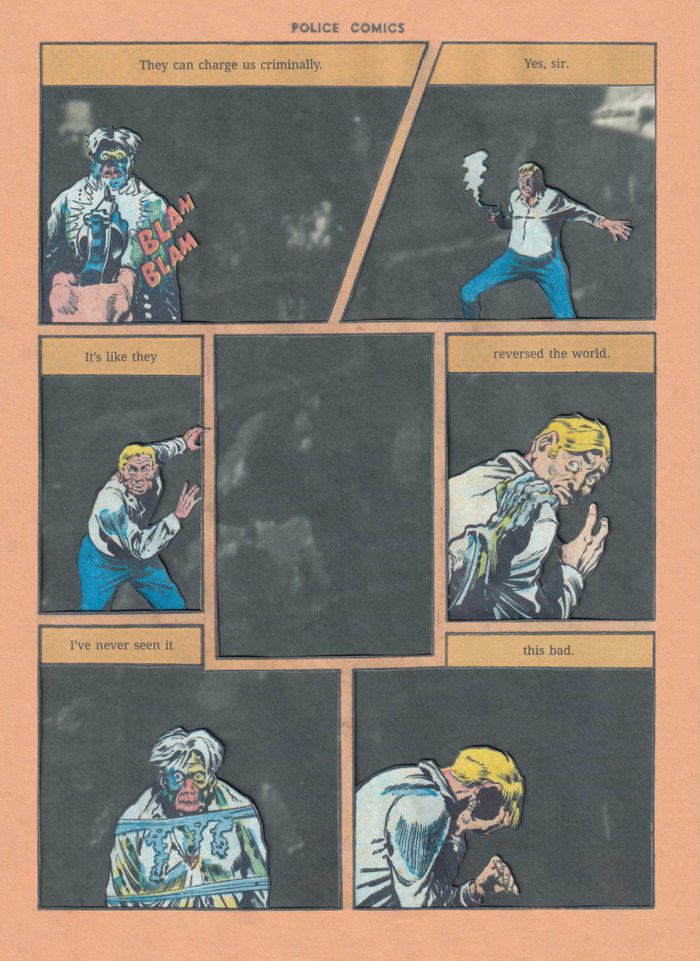
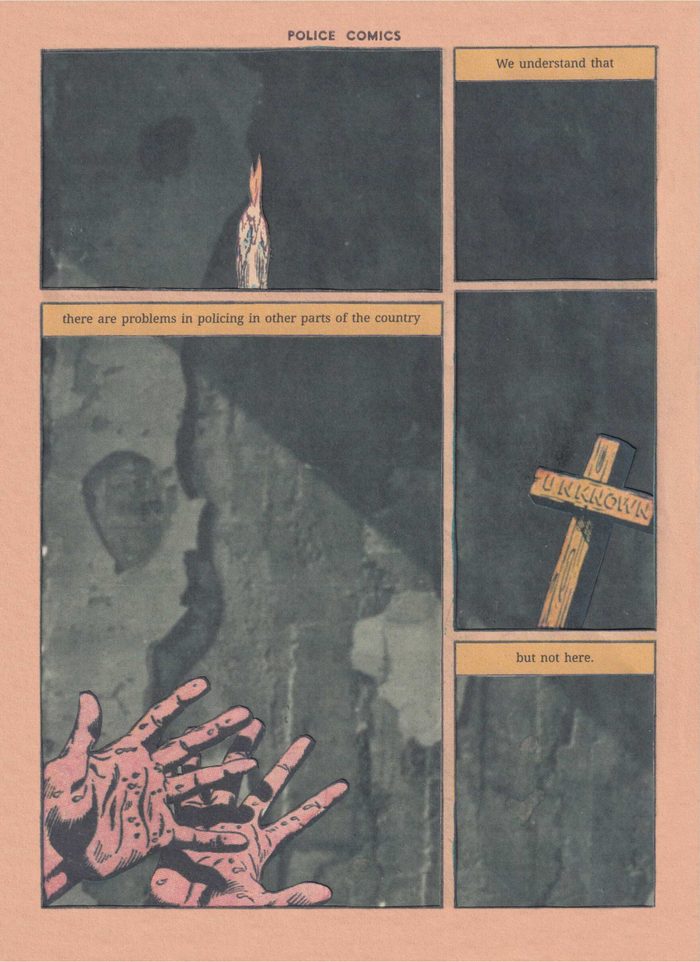
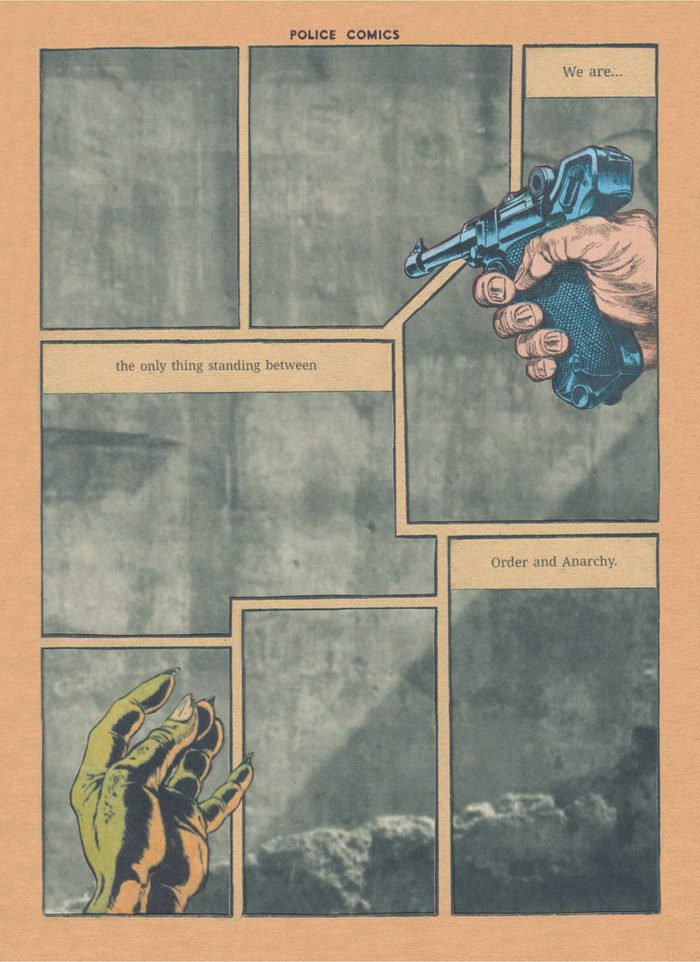
Johnny Damm’s newest comic, “I’m a Cop”, has been featured in The Washington Post, Boing Boing, and In These Times. Damm is also the author of the acclaimed graphic novels Failure Biographies and The Science of Things Familiar, both published by The Operating System. His comics, prose, and visual poetry have appeared in Guernica, Poetry, The Offing, and elsewhere. He lives in Santa Cruz, California and teaches at San José State University.
